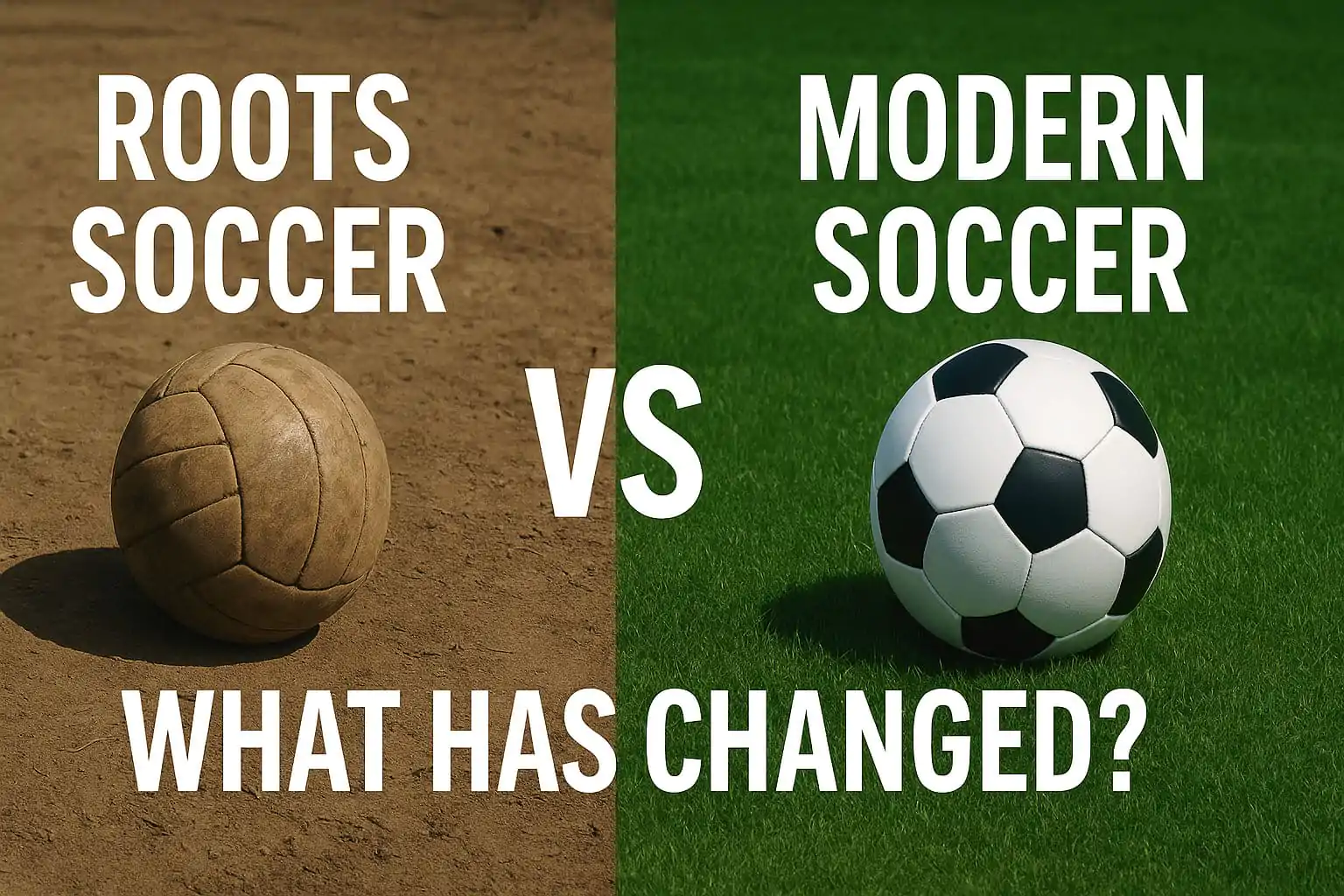Soccer, or football as it’s known globally, has undergone tremendous transformation since its roots in the late 19th century. From amateur beginnings on rugged pitches to today’s multi-billion-dollar global industry, the game has evolved in every conceivable way. But what exactly has changed? This article explores the distinctions between roots soccer and modern soccer, analyzing differences in rules, tactics, player roles, technology, and cultural impact.
Historical Context: The Birth of Soccer
The early version of soccer began as a simple, community-centered game. Played with little regulation, roots soccer emphasized passion over professionalism.
Key Characteristics:
- Minimal rules: No standard ball size, field dimensions, or team formations.
- Community focus: Played for fun or local pride, not for profit.
- Limited tactics: Matches often involved disorganized scrums and heavy physicality.
- Amateur status: Players had other professions and played out of love for the game.
Evolution of the Rules
Modern soccer operates under a globally standardized rulebook set by the International Football Association Board (IFAB), and enforced by FIFA.
Then vs Now:
- Substitutions: Nonexistent in roots soccer; now teams can make up to five substitutions.
- Offside rule: Evolved to encourage attacking play.
- VAR technology: Introduced to assist referees in real-time.
- Yellow and red cards: Introduced in the 1970 World Cup to standardize disciplinary actions.
Tactical Revolution
Tactics in roots soccer were rudimentary. Modern soccer, by contrast, is a chess match requiring precise positioning and team cohesion.
Roots Soccer:
- Formations like 2-3-5 dominated.
- Emphasis on brute strength and direct play.
- Little consideration for space or tempo.
Modern Soccer:
- Complex formations (e.g., 4-3-3, 3-5-2, false nine systems).
- Tactical fluidity with players switching roles during matches.
- Emphasis on pressing, possession, and spatial awareness.
Player Roles and Physical Demands
Players in roots soccer were generalists; today’s players are specialized athletes with specific responsibilities.
Training and Fitness:
- Roots: No structured training or dietary plans.
- Modern: Personalized nutrition, recovery protocols, and performance analytics.
Skill Development:
- Roots: Natural ability and raw instinct.
- Modern: Rigorous youth development academies and technical drills.
Equipment and Facilities
The transformation in gear and playing conditions is dramatic.
Roots Soccer:
- Leather balls that absorbed water and became heavy.
- Basic boots with minimal padding.
- Uneven pitches with no drainage.
Modern Soccer:
- Lightweight, weather-resistant balls.
- Cleats engineered for speed, grip, and agility.
- State-of-the-art stadiums with GPS tracking, hybrid grass, and optimal drainage.
Technology’s Role in Modern Soccer
Technology has revolutionized every aspect of the sport.
Innovations:
- VAR (Video Assistant Referee): Reduces human error in critical decisions.
- GPS trackers: Monitor player movement and fatigue.
- Instant replay and analysis tools: Aid in coaching and player development.
- Goal-line technology: Confirms whether the ball crossed the line.
While these innovations improve fairness and insight, some argue they dilute the spontaneity that defined roots soccer.
Media and Commercialization
Media coverage of soccer has exploded, turning players into global celebrities.
Then:
- Local newspapers and word of mouth.
- Modest crowd sizes.
Now:
- Live streaming and 24/7 sports channels.
- Multi-million-dollar broadcasting rights.
- Social media influence and branding.
This commercialization has broadened the game’s reach but raised concerns about prioritizing profit over purity.
Financial Landscape
In roots soccer, clubs relied on small gate receipts and local funding. Today’s game features immense financial ecosystems.
Economic Differences:
- Player salaries: From part-time earnings to millions per season.
- Transfer market: Inflated fees for top talent.
- Sponsorship: Jerseys, stadium names, and even VAR breaks now carry branding.
While financial growth supports infrastructure and global development, it has also increased inequality between clubs.
Fan Culture and Experience
Fans have always been central to soccer, but their role and interaction with the sport have evolved.
Roots:
- Standing terraces and chants passed down generations.
- Deep local loyalty and identity.
Modern:
- Global fanbases fueled by social media.
- Enhanced in-stadium experience with giant screens, Wi-Fi, and entertainment.
- Ticket pricing has made some clubs less accessible to traditional supporters.
Youth Development Systems
Youth training has transformed from informal local coaching to global academies with science-backed programs.
Roots:
- Street soccer and schoolyard games.
- Community coaches with limited resources.
Modern:
- Professional academies with education, housing, and mentorship.
- Scouting networks that identify talent globally.
This system produces technically refined players but can pressure youth into early specialization.
Globalization of the Game
Roots soccer was hyper-local. Today, the sport transcends borders.
Key Changes:
- Clubs field players from around the world.
- Tournaments like the UEFA Champions League have global audiences.
- Preseason tours in Asia, North America, and the Middle East.
Globalization promotes cultural exchange but sometimes overshadows domestic leagues and traditions.
Societal Influence and Advocacy
Modern players have a stronger voice in social and political issues.
Then:
- Athletes generally remained apolitical.
- Focus was strictly on performance.
Now:
- Players advocate for social justice, climate change, and mental health.
- Campaigns like “Black Lives Matter” and “Say No to Racism” feature prominently.
This evolution reflects the sport’s broader cultural relevance.
The Soul of the Game: What Remains
Despite the vast changes, core elements remain:
- Passion: Whether on dusty fields or in mega stadiums, love for the game endures.
- Team spirit: Success is still a collective effort.
- Unpredictability: No amount of data or money can guarantee results.
Conclusion: From Simplicity to Sophistication
Roots soccer was a game of heart, community, and simplicity. Modern soccer is a global phenomenon characterized by technology, finance, and elite professionalism. While some lament the loss of its humble origins, others celebrate the sport’s expansion and innovation.
Ultimately, the beauty of soccer lies in its ability to evolve while maintaining its essence. Whether you’re watching a Champions League final or a local pick-up game, the spirit of soccer—joy, unity, and competition—remains timeless.

